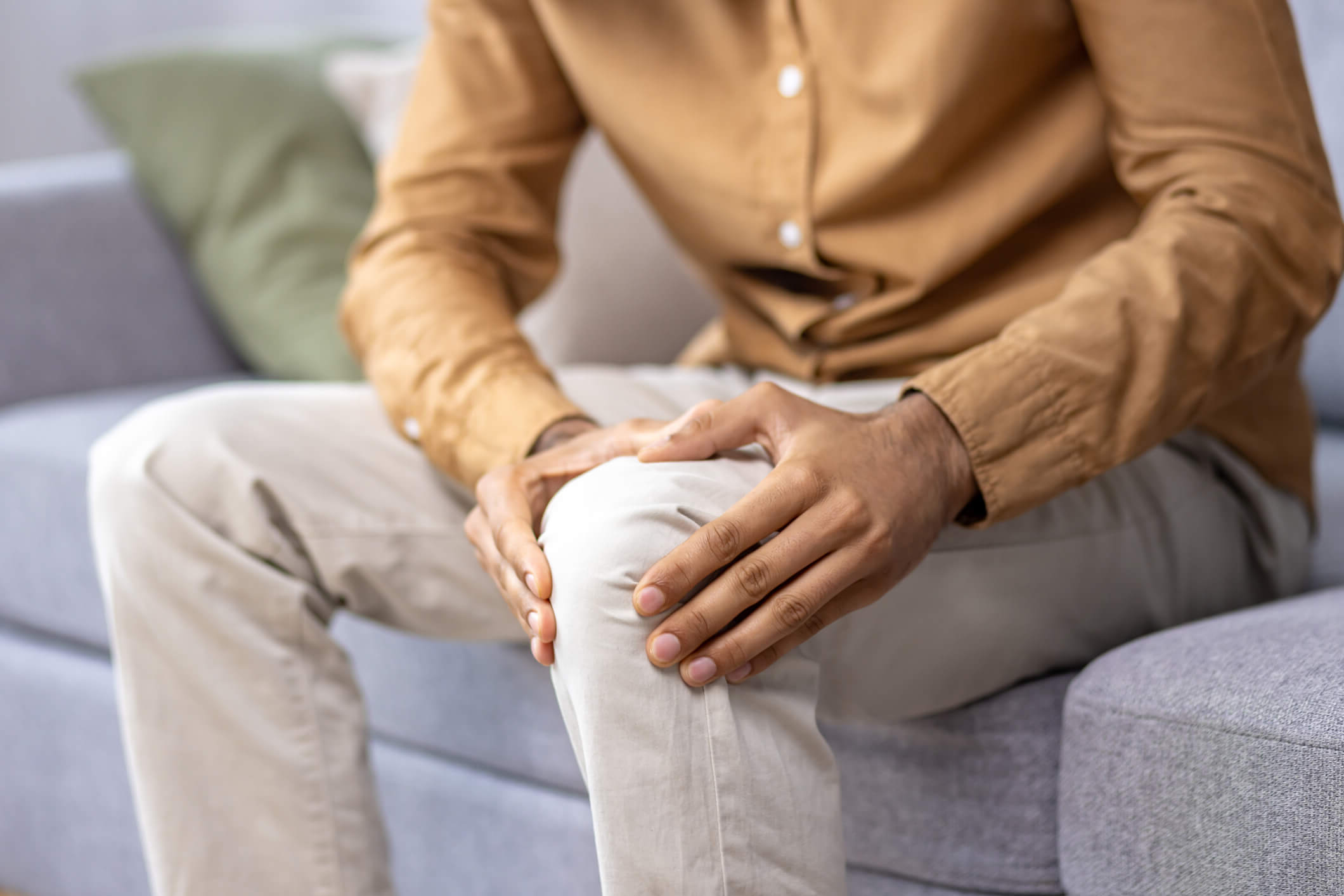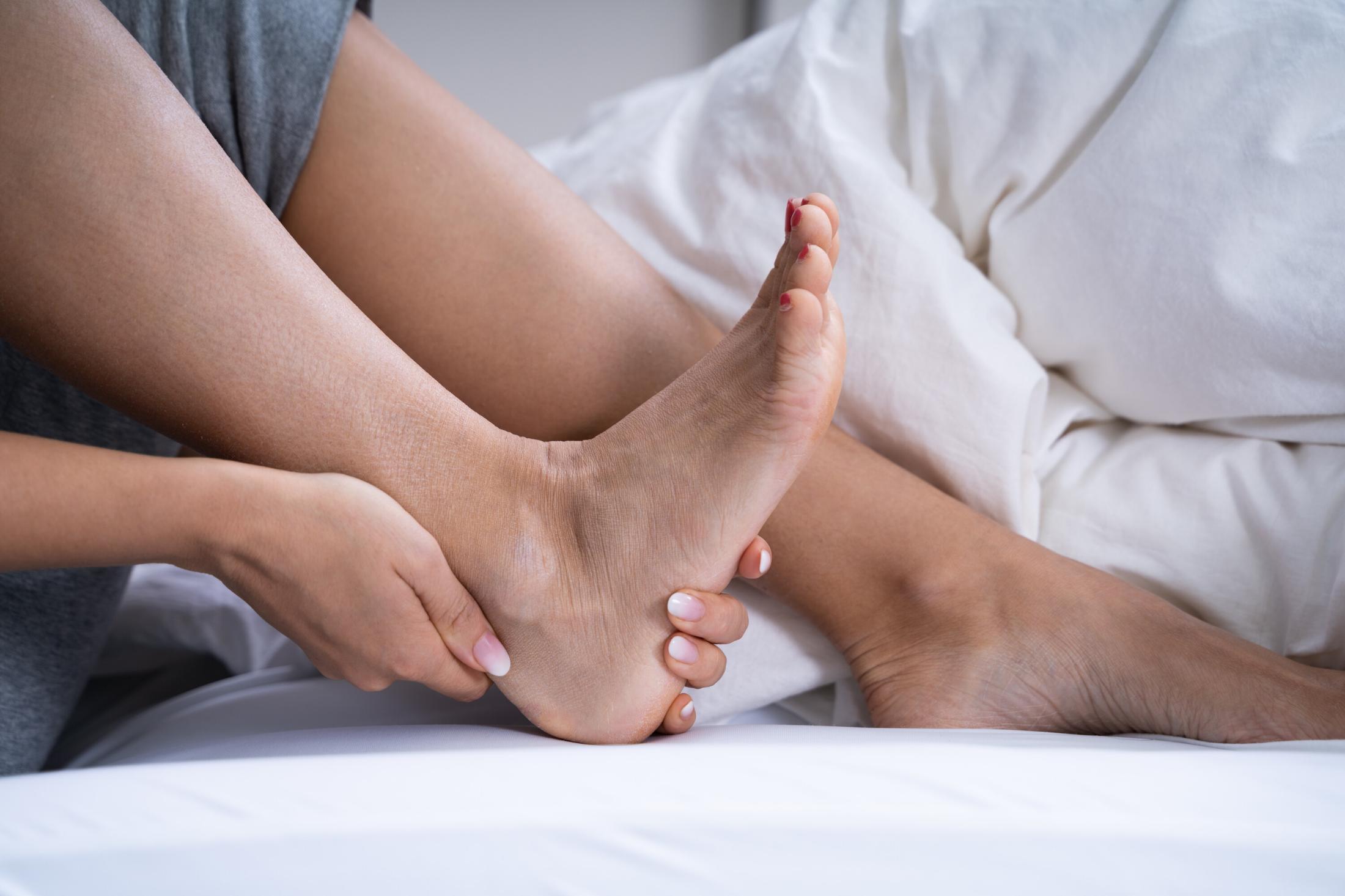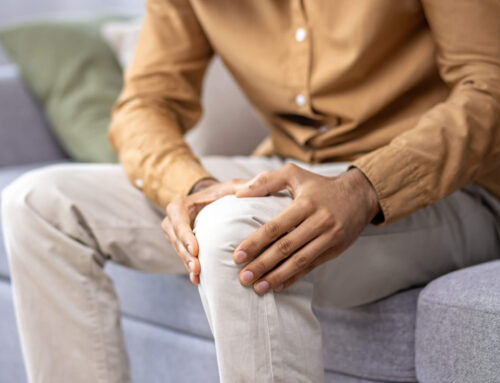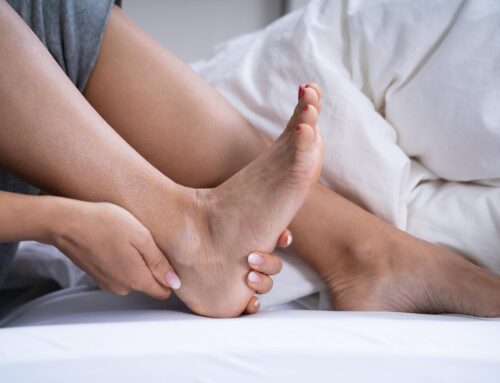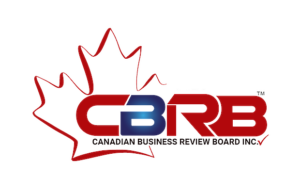Venous leg ulcers (often called VLUs) are one of the most common types of chronic wounds, especially in adults over 50. They can be frustrating, slow to heal, and sometimes confusing, especially when it feels like they appeared out of nowhere.
A venous leg ulcer is simply a wound on the lower leg or around the ankle that develops because the veins aren’t able to move blood back up toward the heart the way they should. When circulation slows down, pressure builds, swelling increases, and the skin becomes fragile. Over time, even a small bump or scratch can turn into an open sore that has trouble closing on its own.
How Circulation in the Legs Works
To understand why venous leg ulcers happen, it helps to look at how blood normally moves through the legs. Your veins have an important job: they carry blood back up toward your heart after it’s delivered oxygen to the rest of your body. Because the legs work against gravity, the veins use tiny one-way valves, almost like little doors, to keep blood moving in the right direction.
When these valves are healthy, blood flows smoothly. But over time, aging, genetics, pregnancy, injuries, or long hours on your feet can weaken them. When that happens, some blood begins to pool in the lower legs instead of moving upward. This is called chronic venous insufficiency, and it’s the root cause behind most venous leg ulcers.
You can think of it like a traffic jam: if the “traffic” in your veins gets backed up, pressure builds. That pressure pushes fluid into the surrounding tissues, causing swelling (edema). And when swelling becomes an everyday issue, the skin doesn’t get the oxygen and nutrients it needs to stay strong and repair itself.
This is why people with circulation problems often notice heavy legs, swelling around the ankles, or skin that feels thin or fragile long before an ulcer appears. It’s the early sign that the veins are under strain, and that the skin may need extra support to stay healthy.
What Causes Venous Leg Ulcers?
Venous leg ulcers almost always start with one underlying issue: poor circulation in the lower legs. But several connected factors work together to make the skin more fragile and more likely to break down. Understanding these pieces can help you recognize changes early and protect your skin before a wound develops.
Poor Circulation (Chronic Venous Insufficiency)
This is the biggest contributor to venous ulcers. When the veins in the legs struggle to push blood upward, pressure builds inside them. Over time, this constant pressure stretches the vein walls and allows fluid to leak into the surrounding tissues.
That extra fluid causes swelling, inflammation, and changes in the skin’s texture and strength. Eventually, the skin becomes too fragile to repair itself properly.
Chronic Swelling (Edema)
Swelling isn’t just uncomfortable, it directly impacts how well the skin can heal. When legs stay swollen for long periods:
- Oxygen and nutrients can’t reach the skin as easily
- Waste products from cells don’t clear out quickly
- The skin becomes stiff, shiny, or itchy
- Even small injuries take much longer to close
Chronic edema is one of the strongest predictors that an ulcer may form.
Skin Changes Over Time
When circulation isn’t functioning well, the skin gradually loses its natural resilience. You might notice:
- Dry or flaky skin
- Darkening around the ankles
- Hardened, tight skin (lipodermatosclerosis)
- Itchiness or eczema
These changes are all signs that the skin is under stress. In this state, even light pressure or rubbing from a sock or shoe can create a small opening.
Minor Injuries That Don’t Heal Normally
In healthy skin, a small cut or bump would repair itself quickly. But when circulation is impaired, that tiny injury may not close, and can slowly widen into a full ulcer.
Common triggers include:
- Bumping your shin on furniture
- Scratches from dry skin
- Rubbing from shoes
- A small insect bite
- A blister that doesn’t heal
Because the area has poor blood flow, the body simply can’t repair the wound efficiently.
Together, these factors create the “perfect storm” for a venous leg ulcer: high pressure inside the veins, swelling on the outside, and skin that can no longer protect itself or heal normally.
Common Risk Factors
Venous leg ulcers can happen to anyone, but certain factors make them more likely, especially as we get older and circulation naturally slows down. These risk factors aren’t about blame; they simply help explain why the veins struggle over time and what might put someone at higher risk.
Age 55 and Older
As we age, vein walls and valves naturally weaken. This makes it harder for blood to move upward, increasing pressure in the lower legs. It’s one reason venous leg ulcers are most common in older adults.
Jobs That Require Long Periods of Standing
Nurses, retail workers, factory workers, restaurant staff, any job that keeps you on your feet for hours can strain the veins. Without movement, blood has a harder time returning to the heart, which leads to swelling.
Sitting for Long Hours
Office work, driving, or limited mobility can also slow circulation. When the calf muscles aren’t contracting regularly, the veins lose their natural pumping assistance, increasing the risk of swelling and skin breakdown.
Varicose Veins
Varicose veins are a visible sign that the valves inside the veins are not working properly. While they don’t always lead to ulcers, they are a strong indicator of chronic venous insufficiency.
Obesity
Extra weight increases pressure on leg veins, which can worsen swelling and slow blood flow. Even a small increase in activity or weight reduction can make a big difference in circulation.
Pregnancy (Current or Past)
Pregnancy can strain the veins due to increased blood volume and hormonal changes. This is why some women develop varicose veins during pregnancy and may have a higher lifetime risk of venous issues.
Previous Leg Injury or Surgery
Old injuries, like fractures, sprains, or surgical scars, can damage veins or interrupt normal blood flow. This can make certain areas more vulnerable to poor healing.
History of Deep Vein Thrombosis (DVT)
A DVT can permanently damage vein valves. Even years later, this can lead to chronic swelling, heaviness, and a higher risk of ulcers.
It’s important to remember that these factors don’t guarantee a venous leg ulcer will develop. They simply increase the likelihood that circulation may need a little extra help.
Why Venous Leg Ulcers Can Be Slow to Heal
One of the most frustrating things about venous leg ulcers is how long they can take to close. Even when you’re doing everything “right,” healing may feel painfully slow. This isn’t your fault, VLUs heal differently because of what’s happening beneath the skin. When circulation is compromised, the body simply can’t repair the wound as efficiently as it should.
Swelling Reduces Oxygen and Nutrients to the Skin
When the lower legs are swollen, there’s extra fluid sitting in the tissues. That fluid puts pressure on blood vessels, making it harder for fresh, oxygen-rich blood to reach the wound. Without oxygen and nutrients, healing slows, and sometimes stops altogether.
Poor Circulation Makes It Hard for the Body to Clear Waste
Just like a wound needs oxygen to heal, it also needs help clearing out waste products from the area. When blood flow is sluggish, the body can’t remove these byproducts efficiently. They build up around the wound, causing inflammation that further delays healing.
The Skin Becomes Fragile Long Before an Ulcer Appears
Once the skin has thinned and weakened from long-term swelling or venous insufficiency, even small trauma, like rubbing from footwear or a minor bump, can create an opening. And because the area is already under stress, the wound spreads more easily and takes much longer to close.
The Body Struggles to Build New Tissue
Healthy circulation brings the building blocks that repair a wound. Without them, the body can’t create strong new tissue quickly. That’s why venous ulcers often look “stuck”, they may improve slightly, then stall.
Infection Can Develop More Easily
When circulation is poor and the skin is fragile, the risk of infection rises. Even a mild infection can slow healing significantly. Signs may include increased redness, heat, odour, or drainage. Catching these changes early makes a big difference.
All of this means venous leg ulcers need targeted support, not just wound dressings, but treatments that address the underlying circulation issues.
How Compression Therapy Helps Support Healing
When you’re dealing with a venous leg ulcer, it’s easy to feel discouraged, especially when healing seems slow. The encouraging news is that one treatment consistently shown to help ulcers close faster is compression therapy. It’s considered the gold standard because it directly targets the underlying issues that caused the ulcer in the first place: swelling and poor circulation.
Compression Reduces Swelling
Swelling is one of the biggest barriers to healing. Compression therapy gently squeezes the leg, helping fluid move out of the tissues and back into the circulation. With less swelling, the skin gets the oxygen and nutrients it needs to repair itself. Many people notice their legs feel lighter and more comfortable within days of consistent use.
It Improves Blood Flow Back Toward the Heart
Healthy veins rely on steady upward blood flow. When valves weaken, blood pools in the lower legs. Compression gives the veins a helping hand by applying graduated pressure, firmer at the ankle and lighter higher up, to naturally encourage blood to move upward again. Better circulation means a healthier environment for healing.
Compression Supports Skin Repair
Once swelling is under control and circulation improves, the skin can finally start rebuilding. Compression helps:
- Reduce inflammation
- Improve oxygen delivery
- Increase nutrient supply
- Support growth of healthy tissue
It’s not just about healing the current ulcer, it’s about restoring the skin’s strength so it’s less likely to break down again.
It Helps Prevent Ulcers From Returning
Unfortunately, venous leg ulcers have a high recurrence rate when swelling isn’t managed long-term. Consistent compression, whether stockings, wraps, or pneumatic compression pumps, keeps fluid from building up again. This reduces the strain on the skin and lowers the chance of another ulcer forming.
Options Exist for Different Levels of Swelling and Mobility
Compression isn’t one-size-fits-all. Depending on the situation, people may use:
- Medical compression stockings
- Adjustable compression wraps
- Short-stretch bandaging
- Intermittent pneumatic compression pumps for more advanced swelling
This makes it easier to find a solution that fits into daily life and supports healing at home.
Additional Ways to Support Healing and Prevention at Home
While compression therapy helps with healing venous leg ulcers, small daily habits can make a noticeable difference, too. These simple steps support the circulation in your legs, protect fragile skin, and help you feel more comfortable throughout the day. Think of them as gentle add-ons that work alongside your primary treatment.
Elevate Your Legs When You Can
Lifting your legs above heart level, even for 15–20 minutes at a time, helps fluid drain more easily. It’s a simple way to ease swelling and give your veins a little break. Many people make this part of their daily routine while reading, relaxing, or watching TV.
Stay Active With Light, Regular Movement
Your calf muscles act like a natural pump for your veins. When they move, circulation improves. Short walks, ankle circles, or gentle stretching throughout the day go a long way in supporting blood flow. Even small movements matter.
Moisturize Daily to Protect Fragile Skin
Dry or itchy skin can crack, which increases the risk of wounds. A fragrance-free moisturizer keeps the skin supple and better able to handle everyday bumps or rubbing.
Choose Supportive, Comfortable Footwear
Shoes that fit well, and don’t rub or create pressure points, help prevent minor injuries that can turn into ulcers. If you deal with foot alignment issues or discomfort, supportive insoles or orthotics can improve weight distribution and reduce stress on the lower legs.
Care When Clipping Nails or Managing Calluses
Fragile skin is easily scratched or cut. If you feel unsteady or have limited mobility, consider having a professional handle nail care to reduce the risk of small injuries.
Intermittent Pneumatic Compression (IPC) if Swelling Is Severe
For people with long-term, stubborn swelling, IPC pumps can be a helpful home treatment. These devices gently inflate and deflate to move fluid out of the legs, improving comfort and circulation. They’re often recommended when stockings or wraps aren’t enough on their own.
Drink Enough Water and Maintain Balanced Nutrition
Good hydration and a nutrient-rich diet support skin health and tissue repair. Even small improvements, like adding more water, fruits, or protein, can benefit the healing process.
These simple habits don’t replace compression therapy, but they do reinforce it. Together, they help create the kind of environment the skin needs to recover, calm, supported, and well-nourished.
When to Seek Help
Even with good home care and consistent compression, venous leg ulcers often need some level of medical guidance, especially at the beginning. Reaching out for help isn’t a sign that you’ve done anything wrong. These wounds are complex, and getting the right support early can make healing smoother and faster.
The Ulcer Isn’t Improving After a Few Weeks
If the wound looks the same, or worse, after several weeks, it may need a different dressing, stronger compression, or additional therapies.
You Notice Increasing Redness, Warmth, or Drainage
These can be early signs of infection. The sooner an infection is treated, the easier it is to get the ulcer back on track.
The Pain Gets Worse Instead of Better
A sudden increase in discomfort may signal that something has changed, such as infection, irritation, or a poor dressing fit.
The Swelling is Severe or Getting Worse
Excessive swelling can overwhelm even healthy skin. A clinician can help determine whether stronger compression or an intermittent pneumatic compression (IPC) pump would be helpful.
You’re Unsure Which Compression Option Is Right for You
Choosing between stockings, wraps, bandaging, or a pneumatic pump can feel overwhelming. A clinician st Care-Med can make recommendations based on your circulation, mobility, and day-to-day routines.
You Have Diabetes or Reduced Sensation in Your Feet
People with diabetes or neuropathy should have leg and foot wounds evaluated promptly, since these wounds can behave differently and may require a more careful approach.
Your Legs Can Heal With the Right Support
Living with a venous leg ulcer can feel discouraging at times, especially when healing seems slow. But it’s important to remember that you’re not alone, and that these wounds can heal with the right support. Every small step you take to reduce swelling, protect your skin, and improve circulation makes a meaningful difference.
Compression therapy, gentle daily habits, and proper foot and leg care all work together to create the conditions your skin needs to recover. Whether you’re just starting your healing journey or managing a long-term condition, know that progress is possible. Even slow progress is still progress.
Be patient with yourself, celebrate the improvements you notice, and reach out for help when you need it. With consistent care and the right tools, your legs can feel healthier, stronger, and more comfortable again, and you don’t have to navigate it on your own.
Share This Story, Choose Your Platform!
Table of Contents
- What Causes Venous Leg Ulcers?
- How Circulation in the Legs Works
- What Causes Venous Leg Ulcers?
- Common Risk Factors
- Why Venous Leg Ulcers Can Be Slow to Heal
- How Compression Therapy Helps Support Healing
- Additional Ways to Support Healing and Prevention at Home
- When to Seek Help
- Your Legs Can Heal With the Right Support
We specialize in orthotics, body braces, and compression wear tailored to your unique needs in Toronto. Reach out to us at info@caremed.care or call 416-782-5353 to book your fitting and consultation.
Experience the difference of customized solutions designed just for you.


